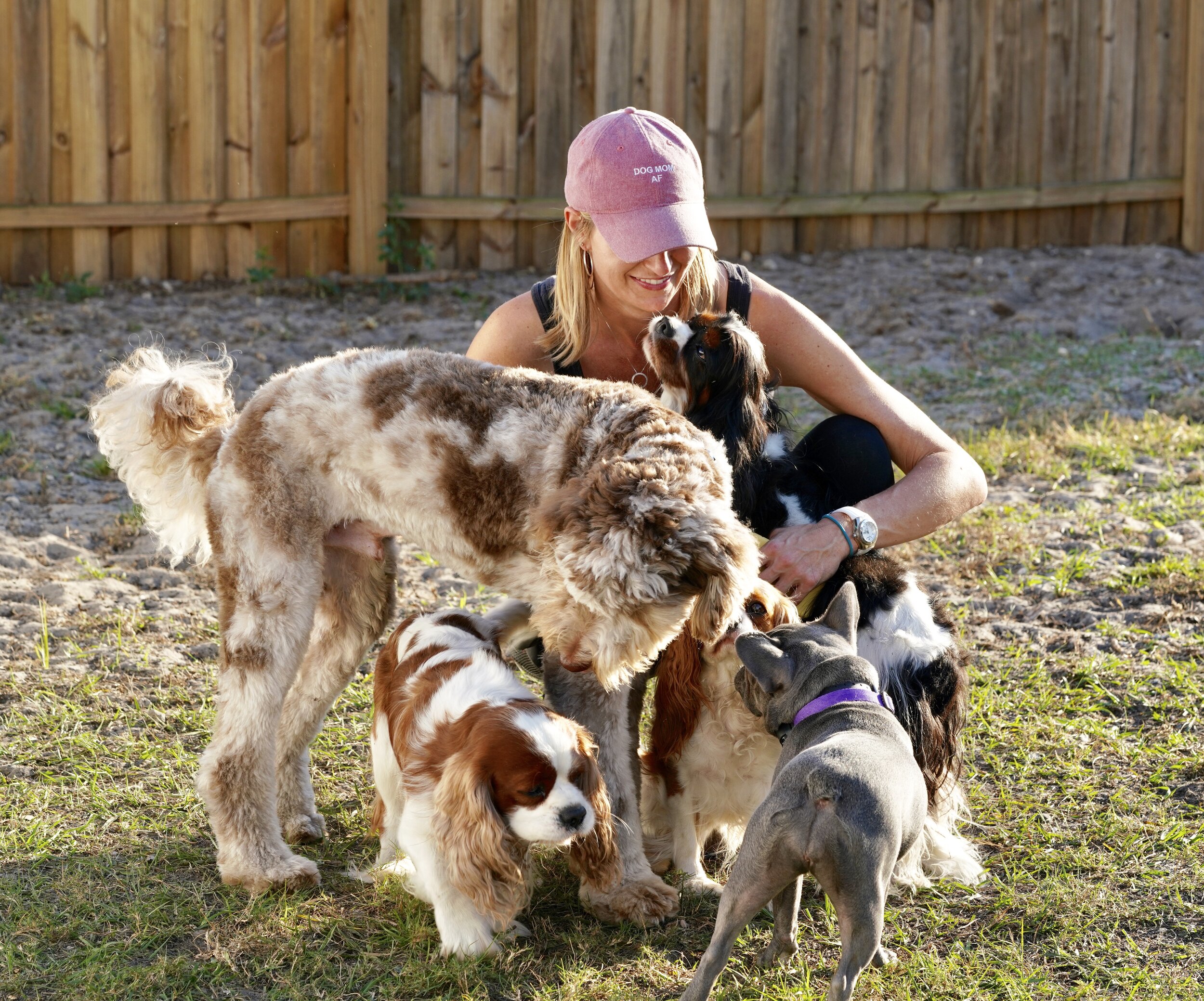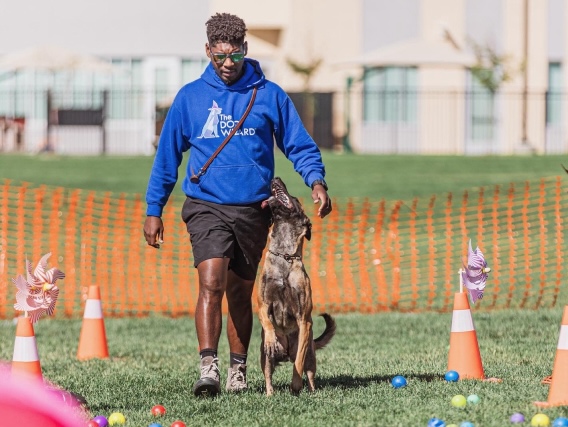The Importance of Patience and Understanding in Dog Training Practices
Transform Your Dog's Behavior With Proven Training Methods
Changing your pet dog's habits requires a nuanced understanding of their specific attributes and demands, as well as the application of tested training methods. Uniformity in your training technique not only boosts obedience but additionally promotes a deeper bond of depend on and respect in between you and your family pet.
Understanding Pet Habits
Understanding canine behavior is essential for effective training and interaction in between humans and their canine friends. Canines, as social pets, exhibit an array of habits affected by genetics, setting, and experiences - Dog training. Recognizing these habits helps proprietors customize their training approaches to satisfy the details requirements of their pets
Secret aspects of pet behavior consist of body movement, vocalizations, and social communications. For example, a wagging tail typically shows excitement, while a reduced head might signal entry or worry. Understanding these signals can assist proprietors analyze their dog's mood and react appropriately. Furthermore, socializing plays an important duty fit behavior; dogs that connect positively with other animals and different individuals are generally much more adaptable and well-adjusted.
In addition, acknowledging stress and anxiety signals-- such as panting, avoidance, or pacing habits-- can prevent rise into much more significant issues. Owners that are in harmony with their canine's behavior can develop a caring and risk-free setting, cultivating trust fund and enhancing the training process. Eventually, a deep understanding of canine habits lays the structure for a harmonious relationship and effective training end results, making sure both pets and their proprietors flourish together.
Favorable Support Strategies
Positive reinforcement strategies are extensively identified as one of one of the most effective methods for training pets, promoting a favorable knowing setting. This method involves gratifying wanted behaviors with deals with, appreciation, or play, therefore urging the canine to repeat those actions. Unlike corrective approaches, positive reinforcement builds trust fund and enhances the bond in between the trainer and the pet dog.
Benefits must be offered immediately following the wanted behavior to help the canine make the link. Uniformity is likewise crucial; utilizing the same commands and benefits assists the pet dog recognize what is anticipated.
It is vital to note that positive reinforcement is not regarding bribery; rather, it has to do with strengthening etiquette. With time, as the pet dog discovers to connect certain actions with positive outcomes, the frequency of rewards can be slowly minimized, transitioning to spoken praise or intermittent rewards. This method not just urges obedience but additionally promotes a positive and pleased canine, making training a more satisfying experience for both celebrations involved.
Addressing Common Issues
Addressing usual issues throughout pet dog training is necessary for ensuring a unified and successful partnership in between the canine and its proprietor. Several pet dog owners encounter behavior difficulties, such as excessive barking, leaping, and leash pulling. Recognizing the source of these habits is important for effective training.
To mitigate this, supply enough physical workout, psychological stimulation, and possibilities for social interaction with both human beings and various other canines. Educating the dog to sit upon welcoming can reroute this behavior favorably.
Leash pulling is an additional prevalent problem, regularly arising from a canine's passion to discover. Utilizing appropriate chain taking care of techniques, integrated with training methods that encourage loose-leash walking, can dramatically improve this habits.
Furthermore, concerns like resource guarding or separation stress and anxiety call for customized approaches. Gradual desensitization and counter-conditioning can be effective in attending to these obstacles. By recognizing and proactively handling these typical problems, pet dog proprietors can foster a more delightful training experience and strengthen the bond with their canine buddies.
Uniformity in Training

To accomplish uniformity, it is important that all participants of the family comply with the very same training methods. As an example, utilizing the same spoken hints and hand signals ensures that the pet dog gets uniform messages. Furthermore, the timing of rewards and improvements need to correspond; prompt support boosts the likelihood that the pet dog will certainly connect the actions with the outcome.
In addition, establishing a regimen can additionally enhance consistency. Regular session, paired with organized timetables for feeding, walking, and playtime, help dogs anticipate and comprehend their environment, making them much more responsive to training. Ultimately, consistency promotes a complacency and count on, encouraging dogs to get more information successfully. By devoting to a structured technique, trainers can promote favorable actions changes and grow a genteel companion.
Building a Solid Bond
How can fostering a strong bond in between a pet and its proprietor improve the training experience? A strong connection constructed on trust fund and regard functions as the foundation for effective training. When a dog really feels safe and secure their explanation in its link with its proprietor, it is most likely to display positive actions and be responsive to discovering. This bond motivates the canine to engage totally in training sessions, as it checks out the owner as a resource of advice and assistance.
In addition, a strong bond assists in better communication. Pet dogs are proficient at reviewing human signs, and a trusting connection enables more clear signals during training. Owners that invest time in building this bond via play, socialization, and favorable reinforcement develop a setting where canines really feel anxious and motivated to find out.
Additionally, a reputable connection can minimize anxiety and behavioral issues, as pet dogs are less likely to act out when they really feel understood and taken care of. Prioritizing the growth of a solid bond not only improves the training experience yet also contributes to a better and extra well-adjusted pet dog. Eventually, the trip of training transforms into a collective collaboration, resulting in lasting behavioral improvements.
Final Thought

Owners that are attuned to their pet dog's habits can create a caring and risk-free atmosphere, fostering trust and boosting the training procedure. Eventually, a deep understanding of canine behavior lays the structure for an unified partnership and efficient training outcomes, making certain both pets and their proprietors flourish together.
Resolving typical issues throughout pet dog training is vital for guaranteeing a unified and successful partnership between the dog and its proprietor.Consistency is a keystone of efficient canine training, as it establishes a clear structure for the canine to recognize expectations and find more info actions.In verdict, transforming a pet dog's behavior with proven training techniques requires an understanding of canine habits, the application of positive support techniques, and a focus on consistency.